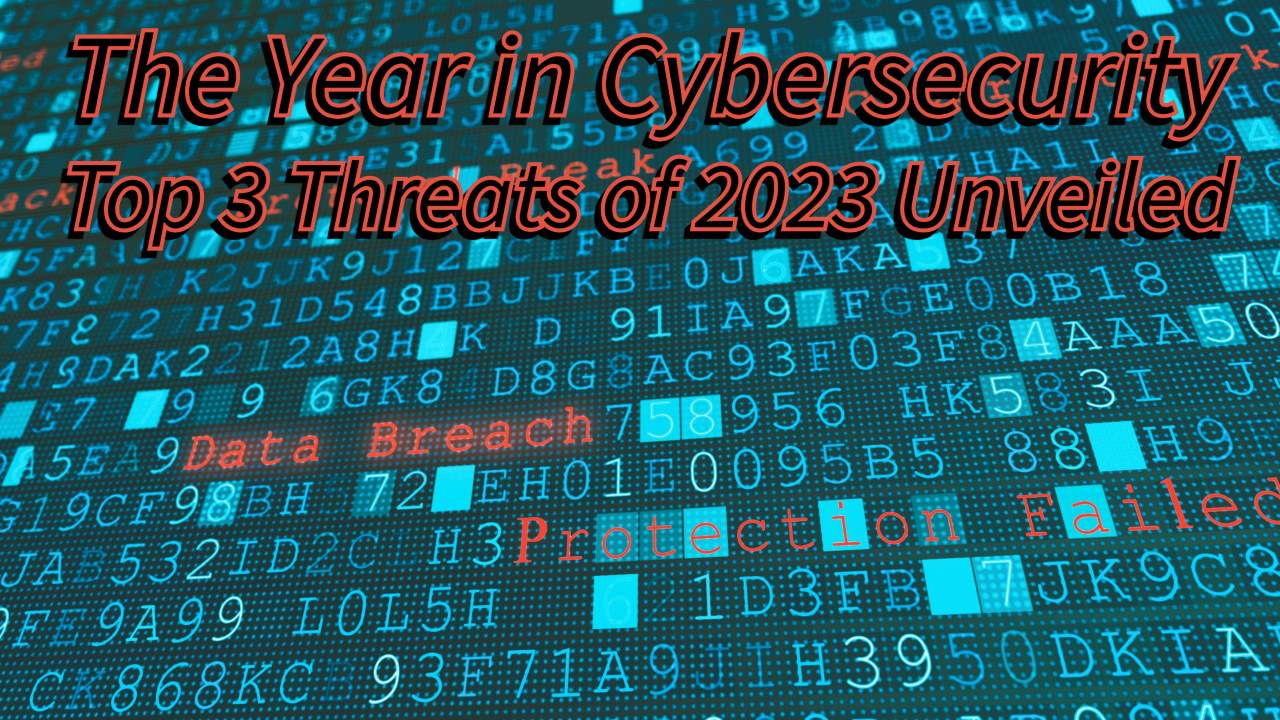The Year in Cybersecurity: Top 3 Threats of 2023 Unveiled

2023: A Perfect Storm of Cyber Threats - Exploring the Top 3 Trends in Data Breaches
2023 has etched itself into history as a year where cyberattacks and data breaches reached a feverish pitch. From the colossal DarkBeam leak spilling 3.8 billion records to the seemingly endless stream of smaller-scale assaults on businesses and individuals, the digital landscape has become a minefield of malicious activity. While the specifics of each attack differ, a closer examination reveals three overarching themes that paint a concerning picture of the evolving cybersecurity landscape:
1. Supply Chain Shenanigans: A Tangled Web of Vulnerability
Imagine this: you meticulously secure your castle walls, only to discover intruders waltzing in through a forgotten back door left ajar by your unsuspecting neighbor. This is the essence of a supply chain attack, where attackers target seemingly innocuous third-party vendors or software dependencies to gain access to their ultimate prize: your data.
The year 2023 saw this tactic employed with chilling success. In February, the Ace Hardware breach, compromising millions of customer records, originated from a vulnerability in a point-of-sale system used by one of their suppliers. Similarly, the Log4j Shell vulnerability, discovered in December 2021, continued to wreak havoc throughout 2023, exposing countless organizations through software dependencies like logging utilities.
These incidents highlight the interconnectedness of our digital world. A data breach at one company can trigger a domino effect, impacting countless others down the chain. It's a stark reminder that cybersecurity is not a solitary endeavor; it requires a collaborative effort, with organizations vetting their vendors and dependencies with the same scrutiny they apply to their own systems.
2. Breaches with Bite: The Soaring Cost of Exposed Data
In 2023, the average cost of a data breach reached a staggering $4.45 million, according to IBM's Cost of a Data Breach Report. This figure, however, represents a mere glimpse into the true depths of the financial fallout. Beyond the immediate expenses of notifying affected individuals, repairing compromised systems, and navigating regulatory fines, lies the insidious sting of reputational damage. Consumer trust, once shattered, is notoriously difficult to mend.
Take, for instance, the T-Mobile data breach in January 2023, where millions of customers' personal information was exposed. The ensuing public outcry and regulatory scrutiny resulted in a significant dent in the company's brand image and market value. Similarly, the Medibank private health insurance breach in Australia in October 2023 not only compromised sensitive medical data but also eroded public trust in the healthcare system.
These incidents underscore the need for organizations to prioritize robust cybersecurity measures as a strategic investment, not just an operational cost. Implementing AI-powered security tools, automating incident response protocols, and investing in employee training can significantly reduce the likelihood and impact of data breaches, safeguarding both financial stability and brand reputation.
3. Nation-State Shadows: When Espionage Goes Digital
The Comcast data breach, believed to be the handiwork of a state-sponsored actor, serves as a chilling reminder of a growing threat: nation-state cyberattacks. These sophisticated, often resource-backed operations pose a significant challenge to both businesses and governments, blurring the lines between cybercrime and international espionage.
In May 2023, the Cybersecurity and Infrastructure Security Agency (CISA) issued a stark warning about Russia's APT29, a notorious hacking group, targeting critical infrastructure in the United States and its allies. Similarly, concerns mounted about China's alleged involvement in cyberattacks aimed at intellectual property theft and economic espionage.
These incidents highlight the need for international cooperation and information sharing to combat the growing threat of nation-state cyberattacks. Governments, businesses, and security researchers must work together to develop effective defenses, attribution mechanisms, and international norms to deter and counter these increasingly sophisticated adversaries.
A Future of Vigilance: The Road Ahead in Cybersecurity
2023's cybersecurity landscape has been a sobering reminder of the evolving nature of online threats. Supply chain vulnerabilities, the rising cost of data breaches, and the specter of nation-state attacks paint a complex picture of a digital world under siege. However, amidst the challenges lie opportunities for proactive adaptation and collective defense.
By prioritizing comprehensive cybersecurity strategies, fostering greater collaboration across industries and borders, and embracing continuous learning and improvement, we can navigate the ever-shifting sands of the digital landscape with greater resilience. The year 2023 may have been a year of cyber upheaval, but it can also serve as a catalyst for a more secure and vigilant future.
References:

